< Back to all episodes
Chris Jarvis and Sam Caplan
From Transactional to Transformative: How Intention Can Remake Corporate Volunteering
This episode of Impact Audio features Chris Jarvis, Co-founder and CSO of Realized Worth, discussing what it takes to make CSR and volunteerism truly meaningful.
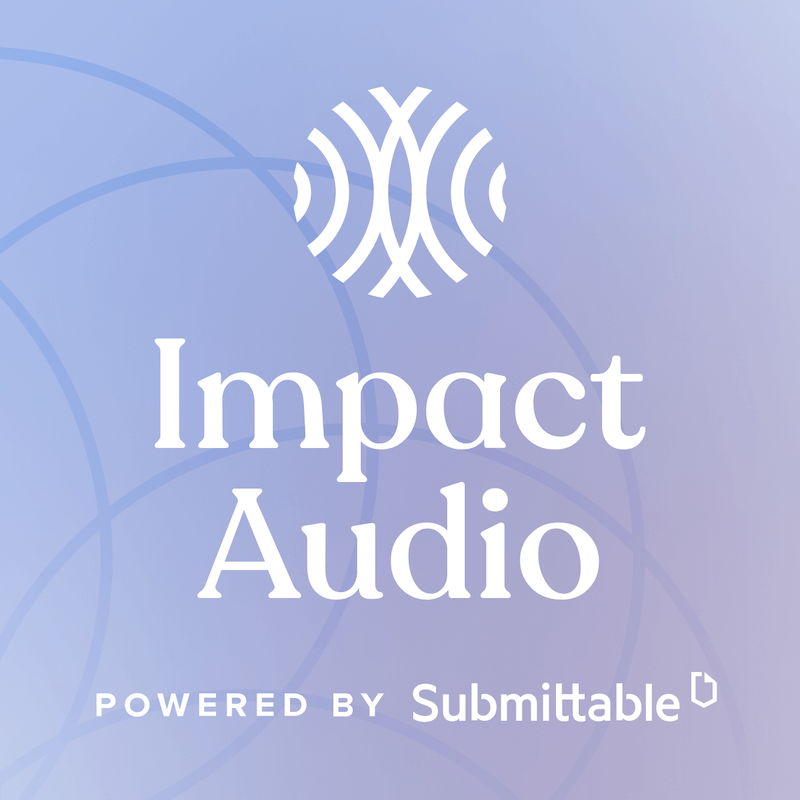
From Transactional to Transformative: How Intention Can Remake Corporate Volunteering
Join Submittable’s Sam Caplan in conversation with Chris Jarvis, an expert in volunteerism, corporate giving, and the neuroscience behind lasting change.
Description:
How can businesses transform their employee volunteering programs from a task-based checklist to an experience that makes a lasting impact? In this episode, Chris Jarvis, Co-founder and CSO of Realized Worth, joins Sam Caplan, VP of Social Impact at Submittable, to discuss the strategies, intention, and brain science that can help CSR meaningfully evolve.
Tune in to learn about:
The rapid evolutions of CSR and employee volunteerism
True measures of program engagement
A transformative vs transactional approach
Two simple strategies for making volunteer work meaningful
Neuroscience’s relationship to empathy—and how it can impact results
Transformative learning theory and how it can revolutionize CSR
We hope you enjoy the conversation.
Guests:
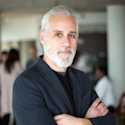
Chris Jarvis
Chris Jarvis is a co-founder and Chief Strategy Officer of Realized Worth, a global agency focused on the design and implementation of employee-led volunteering and giving programs. His work with Fortune 500 companies around the world is helping to mobilize hundreds of thousands of employees to make meaningful contributions in the communities where they live and work. Widely known for his thought-leadership in employee volunteering, workplace giving and corporate social responsibility, in 2011, Chris was asked by the United Nations Office of Partnerships to design and launch the first private sector led initiative to achieve the post-millennial Sustainable Development Goals through corporate volunteering. Chris now volunteers on the board of IMPACT 2030, the only business-led effort designed to unite companies in their corporate volunteering efforts to address the United Nations’ Development Agenda. Chris also offers Impact Coaching to CEOs and executive leaders around the world.

Sam Caplan
Sam Caplan is the Vice President of Social Impact at Submittable, a platform that foundations, governments, nonprofits, and other changemakers use to launch, manage, and measure impactful granting and CSR programs. Inspired by the amazing work performed by practitioners of all stripes, Sam strives to help them achieve their missions through better, more effective software.
Sam formerly served as founder of New Spark Strategy, Chief Information Officer at the Walton Family Foundation, and head of technology at the Walmart Foundation. He consults, advises, and writes on social impact technology, strategy, and innovation.
Connect with or follow Sam on Linkedin, listen to his podcast Impact Audio, and subscribe to his bi-weekly newsletter The Review.
Transcript:
Episode Notes:
Learn more:
Follow Chris Jarvis
Explore the Realized Worth Institute (RWI) and Nudge the Good
Here are references and resources mentioned in the episode:
“Creating Shared Value,” Harvard Business Review, 2011
The Brain (David Eagleman's series on PBS)
Interested in more quality content about CSR? Here are a few Submittable resources:
How Community Investment Fits into Your CSR Strategy (Guide)
Putting DEI Values into Action: A Conversation with CSR Leaders at WarnerMedia (Webinar)
25 Social Impact Examples from Brands Committed to Change (Blog)
How to Build Your Data Strategy: A Guide for Social Impact Professionals (Guide)
The Review (Bi-monthly newsletter by Sam Caplan)
Full Transcript:
Hi and welcome to Impact Audio, the podcast all about adding meaning to your moments in-between. I’m Rachel Mindell. This episode features a deep, moving conversation about CSR and volunteering between two great thinkers, Chris Jarvis, co-founder and CSO of Realized Worth, and Submittable’s VP of Social Impact, Sam Caplan. Just a quick question before we dive in—if you’re not already a subscriber, what in the heck are you waiting for? Take a moment to sign up at submittable.com/impact-audio and get first access to more great content like this. Thanks for being here today and for listening. Enjoy.
SAM: With me today is Chris Jarvis, who along with his partner Angela Parker, is a co-founder of Realized Worth, a consulting firm that works with hundreds of corporations to help make their employee volunteering and giving programs scalable and measurable and meaningful.
Chris and I met several years ago back when I was working as the director of technology at the Walmart Foundation. Chris was working with our organization on a number of projects and initiatives that were related to employee engagement. And since that time, Chris has continued to establish himself as one of the most prominent thought leaders and practitioners in the world of corporate social responsibility.
These days he's spending time leading the Realized Worth Institute, which is a think tank focused on advancing the practice and theory of corporate citizenship. Chris has worked on initiatives with the United Nations. And last year, he launched Nudge the Good, which applies the practices of employee volunteering and giving to behavioral science. So we have a lot to talk about, and we're going to get into all of it right now. Chris Jarvis, welcome to Impact Audio.
CHRIS JARVIS: Thank you so much. It's great to be here. I appreciate the opportunity. Good to see you, Sam.
SAM: Yeah, it's great to see you again. We've both come a long way since those days at the Walmart Foundation, haven't we? Just to set the stage, I'm super curious, what was the state of employee engagement and volunteerism like back in 2015 when you and Angela formed Realized Worth?
CHRIS JARVIS: Well, 2015 we formed the institute. 2008 we formed Realized Worth and-- but it doesn't really matter to be honest because this state was not that different between those two dates. So showing up it's as a bit of an interloper, not coming up the right way. My background at the time was in nonprofits, almost a couple of decades there.
And Angela Parker, who co-founded with me, had about just over a decade as well. And we thought we were going to be working with nonprofits. That is not what happened, which is funny because I should have known why. Under-resourced, overwhelmed.
But our idea was a simple one, Sam. We just wanted to help those nonprofits figure out how to offer a more engaging, meaningful experience for their volunteers by meeting them at their highest level of contribution. That was the goal when we began.
SAM: Right, so-- OK, so you started off thinking that you were going to be working on the non-profit side. You realize that the funding comes from these corporations, right. And I suspect that in a lot of ways there was probably a bigger opportunity in terms of working with corporations and their volunteers and programs. Because just to put it out there, I think a lot of corporations sort of treat their volunteerism programs like a check-the-box activity.
CHRIS JARVIS: Yeah.
SAM: And you guys come at this from a very different perspective in the sense that it can be a much more meaningful experience. And so if we fast forward a little bit, it feels like one of the things that has changed pretty significantly in terms of volunteerism are the employees themselves. So as the workforce continues to become more millennial, and now we have more Gen Z, there's a real expectation among employees in terms of corporate citizenship and corporate purpose. And volunteerism is an important part of that, right?
CHRIS JARVIS: Yeah, absolutely. And there are a couple different ways and there remain a couple of different ways to go. So in the '10s, can-- so is there something you can say yet?
OK, so in the 2010 decade, things began to shift a little bit. There was definitely some interest among the employees themselves to do more to have more room to get out there and get involved in community. And then towards the end of that, there were a couple of different things that happened, and we can discuss them. But I think shared values started to show up.
Mark Kramer and Michael Porter began to write about this. Harvard Business Review ran an article in 2011. They mention shared value. And then by 2015, or thereabouts, it became an approach. And then purpose showed up towards the end of the decade. People have been talking about it long before. But, I mean, you know what I mean. Like, groundswell, when you mention it at a conference, people know what you're talking about. That kind of grew that decade as well.
So these things came together, and employee engagement became more central. I think, for HR, that crescendo, so all of these things came together. And one of the mechanisms that began to be explored more earnestly not only by practitioners but also the technology platforms.
SAM: And so help us understand, what is it about volunteerism that is just so ubiquitous in terms of employee engagement? So I was looking at CECPs giving in numbers report.
A couple of data points from last year just jumped out at me. And the first was that 94% of companies offer at least one matching gift program but that only 22% of employees actually participate in that. So right there in terms of the employee giving, I'm wondering, like, why is there such a disconnect?
And then on the other half of the program, with volunteerism, they report that the standard baseline for employees volunteering at least one hour a year is 30%. And I think when you look at the Fortune 250, the Fortune 300, these programs are just so ubiquitous. It feels like, if anything, there's a huge opportunity here to do these things differently and perhaps better to really increase those numbers.
CHRIS JARVIS: Yeah, that's the premise with which we operate. This report, I believe, has also been put up since 2014, and those numbers are pretty constant in terms of volunteering at least one hour. Now, the real number-- I mean, if you're talking about engagement, you do not want to say one hour out in the community is engagement. That's a try out. That's a test, right.
SAM: Yes.
CHRIS JARVIS: So the real number that we look at is people who log hours on the tech platforms to qualify for Dollar for Doers. So for every company that offers that-- and it's a lot. It's a lot of companies that offer this Dollar for Doer that if you go and volunteer, we're going to give a match.
I think $25 is pretty much a good standard. Some companies are still doing $10 or $15. Apple and Microsoft, for example, do $25. One hour you qualify for it. But that number is around 3%. (Note from Chris: “Dollars for Doers: Median Percentage of Employees Who Participated: 3% (n=44). Giving in Numbers 2019. This number is SO consistent and SO terrible that CECP finally decided to stop reporting it in the 2020 edition. It has not been reported since then.”)
So Microsoft is going to come back and say, whoa, whoa, whoa, whoa we're at 60% or even in higher percent. And then some companies that raise less money-- so Microsoft's raising hundreds and what? $30,000, $40,000. Some companies that raise $8 million and match that, they're going to say they have 80% to 90% participation, but it's like $5 or $6 in giving, right.
SAM: Yeah.
CHRIS JARVIS: That's basic. That's not participation. (Not from Chris: “It may be participation in the strict sense of the word, but it is not engagement in any sense”) That's to get out of my office so I don't have to talk about it, right? So this data can be told a bunch of different ways. But those high participation rates you really have to look at what was the dollar amount and how often did they do it to call it engagement.
Other than that, it's sort of like we wrangled this many people to do it. And that's not really what these programs are for, right. That's, that can't be the point. Having everybody give at least $1 can't be the point of this, right.
SAM: So tell us what the point is.
CHRIS JARVIS: Point is that we give people an experience that lasts a lifetime. That we provide people an opportunity to have an experience that they carry with them for the rest of their lives that influences the trajectory of their life and that they talk about it with friends and family and generationally pass these behaviors along to the next generation.
I know my kids think nothing of my four adult children between the ages of 25 and 30. Took them to, when they were all under 10 or just above 10, to a community meal where they met men and women off the street who were affected by homelessness, addiction, mental illness, that kind of thing. They are not freaked out when they walk down the streets of Baltimore. And they'll talk to people, they'll ask questions for them. They're not an outgroup.
And so for us, how can we give people an experience that they can pass along that changes the trajectory of their life? But you can say an experience lasts a lifetime, volunteering that lasts a lifetime. But there are reasons that it can last a lifetime, and there are big implications, I think, for society if we do this right.
SAM: So if we do this the right way, then volunteering can be this transformative experience for employees. That's fantastic for employees. It's fantastic for their employers. I think it creates a shared sense of purpose and community between the employees and the company that they work for and the communities where they live and they work and they engage in, that all sounds absolutely amazing.
I'm not sure that through a volunteering experience that I personally have been transformed. And I'm guessing that many people have not been transformed. But this is where Realized Worth comes in and says, like, this is possible, right. So clue us in. How do I become a transformed individual through volunteering?
CHRIS JARVIS: That's a great question. I think there's two ways to look at it. One is as a volunteer, what I should be looking for in this experience now that I've listened to this podcast and Sam's clued me into this? Or, secondly, the people managing the space, they're holding the space, this is the nonprofit. And for employee volunteering, this is the company as well.
Let's talk about it from that angle. And I wanted to do a callback to the top of the show where you said a list that you can check off.
SAM: Yeah.
CHRIS JARVIS: And that's not what we want for this kind of community investment program. But I'm probably not going to be wrong if I said that's where everybody starts because you don't know any different, right.
It's like when I go to the gym for the first time in my life. And honestly, I didn't grow up with a lot of that kind of guidance. So there wasn't a time as an adult I went to a gym and thought, mhm, what do you do? And I just had a mental list in my mind. I'm going to go do this, I'm going to do this, and I checked it off. Did I have a great experience that was going to change my physique? Nope.
This is where you start, right. You've got to have that, and then you kind of layer on over and over. So no harm, no foul to the groups that are just the companies or nonprofits that are getting into this. And if it feels a bit more like a checklist, that's fine.
But where things need to go beyond that as we get a little bit more informed about the practice, and we listen to things like you may be listening to today, your audience, and you realize, oh, there is a difference between a transactional approach where I go and do something good in the community, and I paint a wall, or I clean a park, or I mentor a child. New things are all good. We should not stop doing them.
They don't need to be transformative in order to have value. They have objective value because they're doing something in the community. But they don't carry the value that I was talking about, which the volunteering experience that lasts a lifetime, because it's just transactional. I go and I feel good, and then when I'm done, a transformative experience has to bring you to a place where you have three considerations. So we're going to talk about the end goal, and then we can dig into how you do it if you want.
SAM: Yeah.
CHRIS JARVIS: These are the three considerations. These are three results. They happen some of the time but they-- for some of the folks, but they won't happen all of the time for all of the folks. So just I want to be very, very clear with that. You can create space that is transformative. And I can dig into that, like I said, a little bit more to explain what that means.
But you cannot make someone transform. That's horrible. We would never suggest that. So we can create the space, hold the space and invite you in, and then create the conditions where it could happen if you're open to it. And here are the three results that prove it's transformative, or it's not.
One, I have a perspective change of myself. I see myself differently. And this is psychological change. And these are things like who am I? What's the point? How much am I responsible for homelessness to my own community? If at all, how much of my response to-- what's my responsibility to learn about it? What other things should I do? Do I know what to do? So these are all a sense of who you are to your agency, your role.
The second one-- so it's a psychological change, how I see myself changes. Second one is convictional change. This one we just all have to understand almost everything we know about the world around us and even ourselves is misinformed. It's not wrong. It just creates-- it just contains little pieces that don't make sense, or more likely, there's gaps.
So there's a bias there where we're missing information, but we don't care because we've just wrapped up with a bow and we say, I know enough. I figured it out. It's probably right. So a convictional change brings you to a place where you're open to consider there are knowledge gaps, I have been misinformed, or I have brought my own bias to the situation, which is coloring it completely different than it is.
Doesn't have to mean that you radically change everything, but there should be something where you leave and you ask questions like, I didn't know, nobody told me, is this always happening? What should I be doing? I don't even understand what's going on, I thought I did. You should notice a gap, and it should be somewhat compelling, almost alarming, and you should want to inform yourself.
And then the third change is a behavioral change. This is the only one we can see. But this is where once you've had your experience, and you're open to asking these questions about who you are and what you believe, you're going to test it out. You're going to walk into the world and you're going to say, OK, they said this, this. I'm going to--
I don't know, I've held on to these other beliefs my entire life as far as I can remember. I've never thought differently. So I'm going to test out a different way of doing this and either works or it doesn't, or you find out maybe you need more information and the loop begins again. You go back to experience and you think about who you are, what you believe, and test it out.
So those are the three fundamental metrics in a transformative approach-- psychological change, a convictional change, and a behavioral change. If that's not happening, you're using a transactional approach to these experiences, which has value. It just doesn't have the transformative value of an experience that lasts a lifetime.
SAM: All right. So all of that makes perfect sense to me. But I'm curious, how do I achieve this transformational change when I'm going and I'm painting a wall, or I'm picking up a park? Like, it doesn't feel like those are significant enough events to create a psychological change, I mean, a convictional change and a behavioral change based on what I'm doing.
CHRIS JARVIS: Great question. And that was our question, too.
So painting is a good example, right. It is the quintessential employee volunteering joke, and it's squarely transactional, true?
SAM: So how do you take something like that and make it transformative?
CHRIS JARVIS: All right, great question. Here's how you do it-- you framed the experience, front end and back end. That is all your responsibility from the start to the finish. And framing means that we bring meaning to the experience that can be owned by the individual.
Now, it's very, very important that we don't wander into overjustification in theory space here where we tell somebody why they should care about it.
On the front end of the framing experience, we do something called the brief. Basically you get people in a semicircle, you talk about we’ll get done, how are you going to get that done, and why it matters. Now, the why is really key because the why has to include two pieces.
Number one, you have to be able to create proximity to the beneficiary. Human beings only respond with empathy when they can see another human face, OK. So I'm not going to be empathetic to a bullet list. I'm not going to have that much empathy unless I know the person who wrote it when I read an article. I can have compassion. I can have sympathy.
But empathy is this neurological unbidden response in our brain where our brain secretes a different set of chemicals that cause us to want to act in two ways-- one, stop the pain or stop the problem, or, two, we have to get away, right.
So I create proximity to the beneficiary. How do you do that? You tell a story. You tell a story about who the person is, what they're facing. It's not-- the point isn't how fast can you paint the wall?
The point is, who's benefiting from this? What's their situation? Where do they come from? I have to be able to either see the beneficiary, or you tell me a story so I can mentalize or visualize the person in my mind.
We're so good at imagining what it would be like to be somebody else. We're so practiced because of our evolution to imagine what's around the corner, what could be up there, what could be down there, that we can do this pretty easily.
The second part is task significance, which is how is what we're doing here going to matter to anybody, right. So the story we tell when we went to paint on an island in the Caribbean, the gentleman who led it actually had a background in transformative learning theory. And he did the whole circle why you're here.
And when he said, OK, well, let me tell you, we appreciate you coming here to help us paint. It was a slum right by a garbage dump. He said, but your presence in our community today is entirely unnecessary. We know how to paint. I could go buy the paint. We could do it ourselves.
We invited you here as a-- and the painting is an excuse to do something with part of the community that you as tourists never see. So this is an occasion to expand and understand the painting is just a means to an end. And that was amazing.
Like, the significance of the task then gets converted from, we're here to do something for other people because we have and they don't, we can and they can't to, oh, I'm here to meet people and learn from them and make a connection. That was an amazing example of task significance. And there's a whole bunch of different ways.
But those two things are absolutely critical-- proximity to the beneficiary and task significance as part of your why. That is the first big step towards making it transformative.
SAM: Yeah. So what really stands out to me listening to you to describe this is that there's neuroscience behind all of this right. And I think that's something that probably sets Realized Worth and you and Angela apart from many other people who are working in the field.
So talk with us a little bit about the neuroscience again because it's just fascinating to me that in all of my volunteer experiences, I don't think I've ever had anybody attempt to shape who I am as a person. It's typically very task-oriented as you've been talking about. But I don't know that I've ever emerged from any volunteer experience where I felt like I had actually changed.
CHRIS JARVIS: Well, one of the things we realized early on is that although we had an aptitude towards the elements that could make it transformative, again, I think we had a methodology that preceded our understanding of what was going on a scientific level. So as we began to do our due diligence and dig into it more and understand it more, and pass along, we became more knowledgeable. And then in 2015, we began to collect academics from different fields-- cognitive science, behavioral science, different fields in CSR.
And we now have a faculty, and it's an ever-growing part of the institute because we really do believe that if you bring science to the practice, you can get an entirely different result with that lasting effect, volunteering that lasts a lifetime and experience that lasts a lifetime. So you're absolutely right. And that's become an emphasis of our work even with the good work where we're focusing on these micro interventions based on behavioral science.
But stepping back to what happens when-- like, why is it transformative from a scientific background? There are two pieces that come together here. One is a transformative learning theory, which we came across much later than this approach that we were using, which framing and all that kind of thing.
Transformative learning theory is an approach to adult education, which is experiential and it is phenomenal. It just-- everything seems to line up between that very studied, however, very academic approach to adult education and what we were doing out in the community.
So when Angela goes to speak at a transformative learning theory conference, and she shares some of her experience of how you apply that, apply transformative learning theory, the audience is typically, wait, what? How do people do this?
SAM: Yeah.
CHRIS JARVIS: Companies know about what we're doing here? We thought we were all alone? We thought this is just an education thing? Tell us more. How does it work in the real world? So that's definitely been a part of it.
And then the other piece, I think my own journey in learning about neuroscience, which is a fascinating piece, probably began because of the turrets that I have, which is a neurological disorder, but really picked up speed when I came across-- and I highly encourage everybody listening to check out David Eagleman's series on PBS called The Brain and episode five, “Why Do I Need You?”
I remember vividly sitting in the hotel room watching this thinking, oh my God. This is what everybody needs to know to realize we are not just running a nice thing out of the office or skill-based anything or team building. Those can all be true.
These people are responsible for the future of the species-- these CSR practitioners, these people running these programs, these people getting people out in the nonprofits that are hosting them. This is one of the most direct ways to give people an experience that can change generations going forward so that we are not so us and them, in and out, dehumanize the other group, and then see what's happening like is happening in Europe today.
SAM: Yeah. Let me change gears for just a minute here. I want to go back to something that you had touched on earlier. And you were saying-- you mentioned that organizations are using technology as part of this volunteerism experience and journey.
And so I work for a technology company, and this is something that is very near and dear to my own heart. It feels like for many years technology in this space has really focused on the mechanics of volunteering.
CHRIS JARVIS: Yeah.
SAM: Right. So it gives me an opportunity to record my hours.
CHRIS JARVIS: Yeah.
SAM: And we use technology to move funds from an employee or a corporation to a non-profit organization. But it feels like there's a much greater opportunity for technology to help shape this experience that you've been talking about. Like--
CHRIS JARVIS: Yeah.
SAM: --is this the direction that we're moving in terms of our tech and the volunteerism space?
CHRIS JARVIS: Well, really interesting. There's a whole podcast we do on the history of tech supporting this space.
Technology is extraordinary in creating efficiencies, absolutely. It really does zero in effectiveness, right? That's all the people think. It will help you do whatever you want to do better. It just doesn't tell you whether you should be doing A, B, or C and what your motives should be and whether you're doing it the right way or you're bringing bias in, or you have a colonial approach to philanthropy, or you're hurting rather than helping it.
It has zero to say about any of that. But it will help you do whatever good or bad thing you want to do way better than you could without it. Does that make sense? And I'm wondering how that sits with somebody who is sitting in a technology seat. So I'm very curious.
SAM: Yeah. Well, you know I have very aspirational goals with technology and employee engagement and corporate social responsibility. And I think that technology helping with the mechanics is a great first step.
A great second step is technology helping with maybe helping us develop a greater level of comfort and understanding, right. So technology can help acclimate us to this environment for where transformative change can happen. And then I start looking at emerging technologies out there like artificial intelligence and machine learning, and I really feel like the sky's the limit. I'm convinced that technology has the opportunity to play a much greater role in helping us down the path of a transformative experience than we're currently using it for today.
I'm not sure what that looks like in 36 months, how do we get there? Those are important questions for technologists to be thinking about. But I feel like there's a much greater opportunity for technology to play a significant role in helping us to transform and to become better people and to become much more engaged, connected stakeholders in our community.
CHRIS JARVIS: I agree 100%. 100%. If you are trying to have a big impact with your program, and you're using Excel-- no disrespect to Excel. It's just it's not built for this necessarily.
We talked to a CSR practitioner who had to figure out for the annual report how many people participated by counting photos that she collected from all the events throughout the year. It was just-- so, yeah, I think this technology definitely speaks to efficiencies as we understand them.
And if we have the right intention, it can be affected. If we come at it and we only understand the transactional approach, because that's how we grew up and that's what we've experienced, your technology is not going to make it transformative just by introducing technology. You have to want to do that. And then you have to use the technology appropriately to get that result.
Any kind of technology in-- if the person doesn't understand the point, like the why and how do you use that technology to get there, it'll just take you where to go. That's all I'm thinking.
But I tell you what, we can't get scale without it. We cannot-- yeah. And if we're talking about a transformative approach, that's got to be one of the things we want to do. So bring the intention, invest in learning about the neuroscience, behavioral science. Forget about best practices that you heard at a conference that somebody else is doing and figure out how to stick that into your own program.
Take the time to understand you're playing a critical role in the future of the species. You need to come with that intention, and then get the right tech to support it because everybody else at the company is making things, selling things, selling services. You're building the future of the country. That's what your job is. You're building the future of the species internationally.
So don't just think, oh, it's a day at the office. It's much bigger than that, and you need to invest in yourself and the tech in that way with that in mind.
Thanks for listening. There are tons of great resources for you to chew on in our episode notes. Please be sure to visit realizedworth.com and explore opportunities to make your employee volunteering and giving programs scalable, measurable, and meaningful.
Impact Audio is edited and produced by Jordan Marvin, Laura Steele, and yours truly. Submittable is a cloud-based social impact platform designed to help your team make better decisions and have a bigger impact. We’d love to partner with you to maximize social good and create lasting change through smarter technology—find out more at Submittable.com. And until next time, take good care.
Additional Resources
Season 2 , Episode 5| 15 Min
How Tech Can Turn Silos Into Systems Change
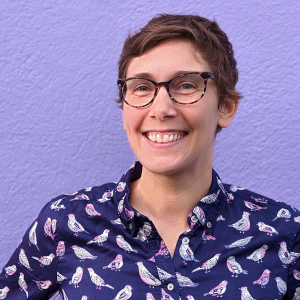
Amy Sample Ward
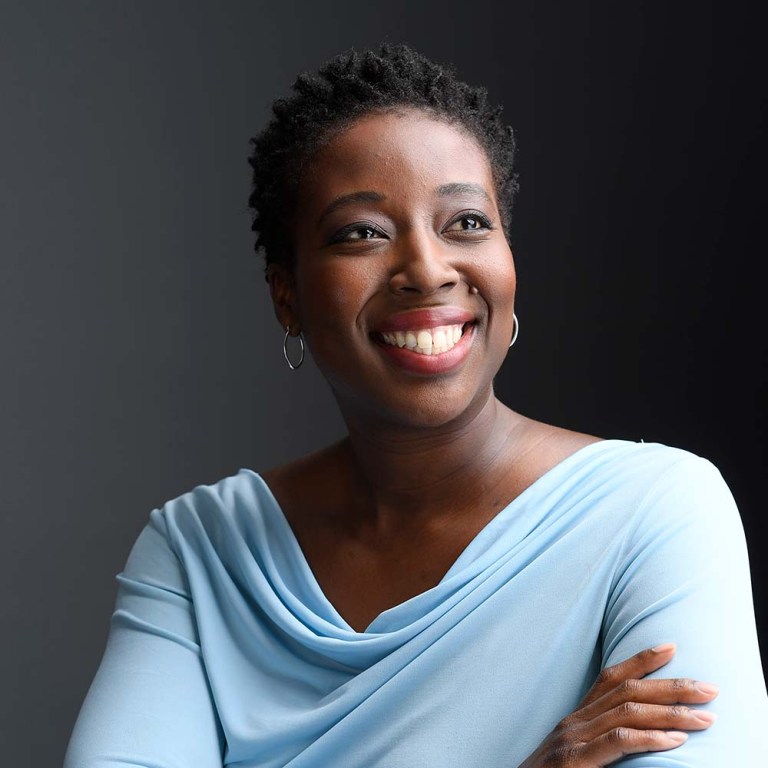
Afua Bruce
Season 1 , Episode 10| 20 Min
The State of Corporate Purpose: Insights from CECP's 2021 Giving in Numbers Report

Sam Caplan
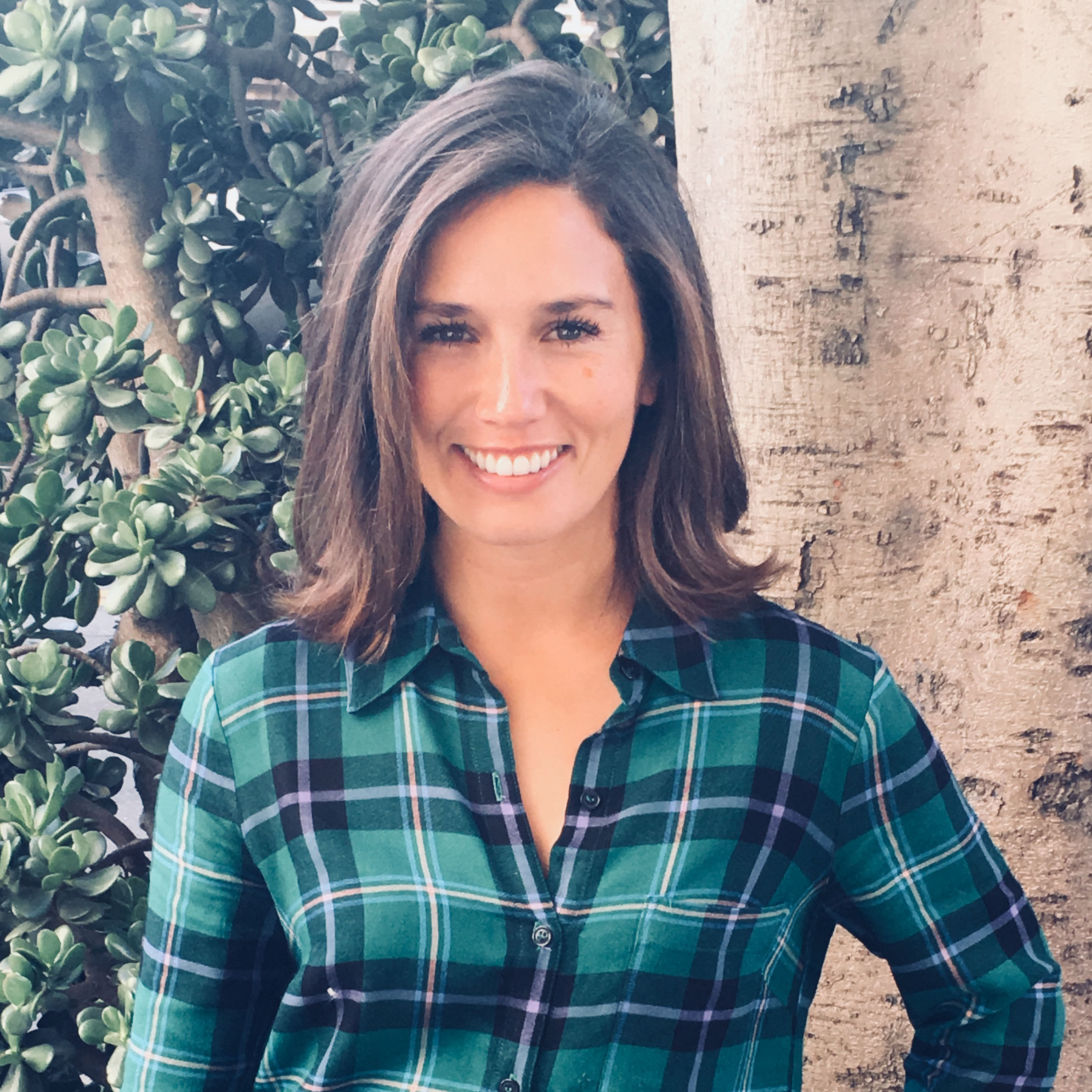
Natalya Taylor

Laura Steele










